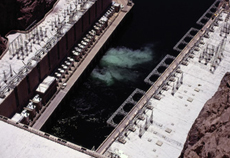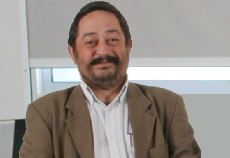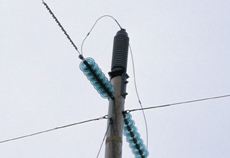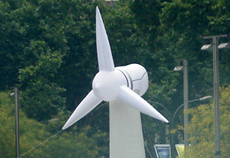H I G H L I G T H
To avoid blackouts in Portugal and Spain
INESC Porto carries out a study for the planning of power reservoirs 
Can you imagine the effects of the blackout occurred in Brazil in 1999? Do you recall the blackout that launched the chaos in Moscow in 2005 affecting around two million people? In order to avoid extreme situations of breakdowns in the Iberian Peninsula, the Power Systems Unit is developing an innovative system that will help Portuguese and Spanish Electrical Networks to plan power storage until 2025.  The great study The great study
In November 2006, the Power Systems Unit (USE) started a study on long-term operational reservoirs in Portuguese and Spanish electrical systems, in a project hired by the Rede Eléctrica Nacional and the Red Eléctrica de España (REE), the two system operators of the Iberian Península.
The objective of this project, which should be finished by October 2007, is to identify the reservoir needs resulting not only from the growing consumption and changes in the power generating system but also from the progressive integration of great amounts of wind power.
Framing
In every country, power systems own a set of generators to provide the necessary energy. The problem is when they break down and become unavailable. In these cases, more power is needed to solve deficiencies. Besides, water and wind resources aren’t always totally available.
It is essential to have an operational reservoir that is able to compensate not only breakdowns and an unpredictable increase in consumption but also the unexpected variations of wind and other volatile resources.
 Simulation analyses Simulation analyses
The long-term analysis made by USE’s team consists in the simulation of different conditions in the future with the possible variations of supply/consumption and considers the expected increase of consumption until 2005.
According to Manuel Matos, coordinator of USE and the project, many possible years are simulated with different sequences of water and wind affluence as well as possible breakdowns according to the statistical data available. He states “if we estimate the average of hours per year in which we wouldn’t be able to ensure consumption in all these simulations, we can quantify the risk”.
Risk and safety 
The indicators obtained from the analysis will allow us to point the risk of not responding to the consumption. Manuel Matos adds that the objective is to keep that risk below values considered appropriate.
The results achieved in the end of the study will inform REN and REE if it is necessary to increase the generation park in relation to what was expected. On the other hand, more machines will be needed to work in a situation of operational reservoir. The coordinator of USE explains “we must ensure safety in supplies; it is not about people’s safety in terms of accidents but the guarantee that it is possible to supply power to all consumers in every moment”.
 A multi-functional study A multi-functional study
Though centered in a simulation process established, this study is innovative because it focuses on the long-term analysis of the operational reservoir which is, by nature, a short-term object. According to Manuel Matos, this study will have a double function because it will analyse two situations at the same time.
The Professor reveals: “In the long run we will check if the machines we own to supply power are enough to respond to the future consumption variations”. On the other hand, the operational reservoir must be thoroughly planned given that the machines that will be on the reservoir must work, which implies additional costs.
 The break-even point The break-even point
The coordinator states “we can’t bear costs with unnecessary machines, but we can’t take the risk of leaving a country in the dark either”, ensuring that it is that hard break-even point that both Portuguese and Spanish Electrical Networks need.
This work will allow REN and REE to estimate, in the conditions expected for the development of the generating system, the risk of the lack of supplies. That risk could never be zero but it should remain below a value considered acceptable. Manuel Matos considers “this job will help operators find measures to ensure that the risk levels are acceptable”, allowing them to optimize costs and ensure safety”.
Human Resources
The Project team includes Manuel Matos and João Peças Lopes (coordinators of the Unit), Mauro Rosa and Ricardo Ferreira, as well as Armando Leite da Silva, former collaborator at USE currently at the University of Itajubá in Brazil.
|


 The great study
The great study 
 Simulation analyses
Simulation analyses 
 A multi-functional study
A multi-functional study  The break-even point
The break-even point